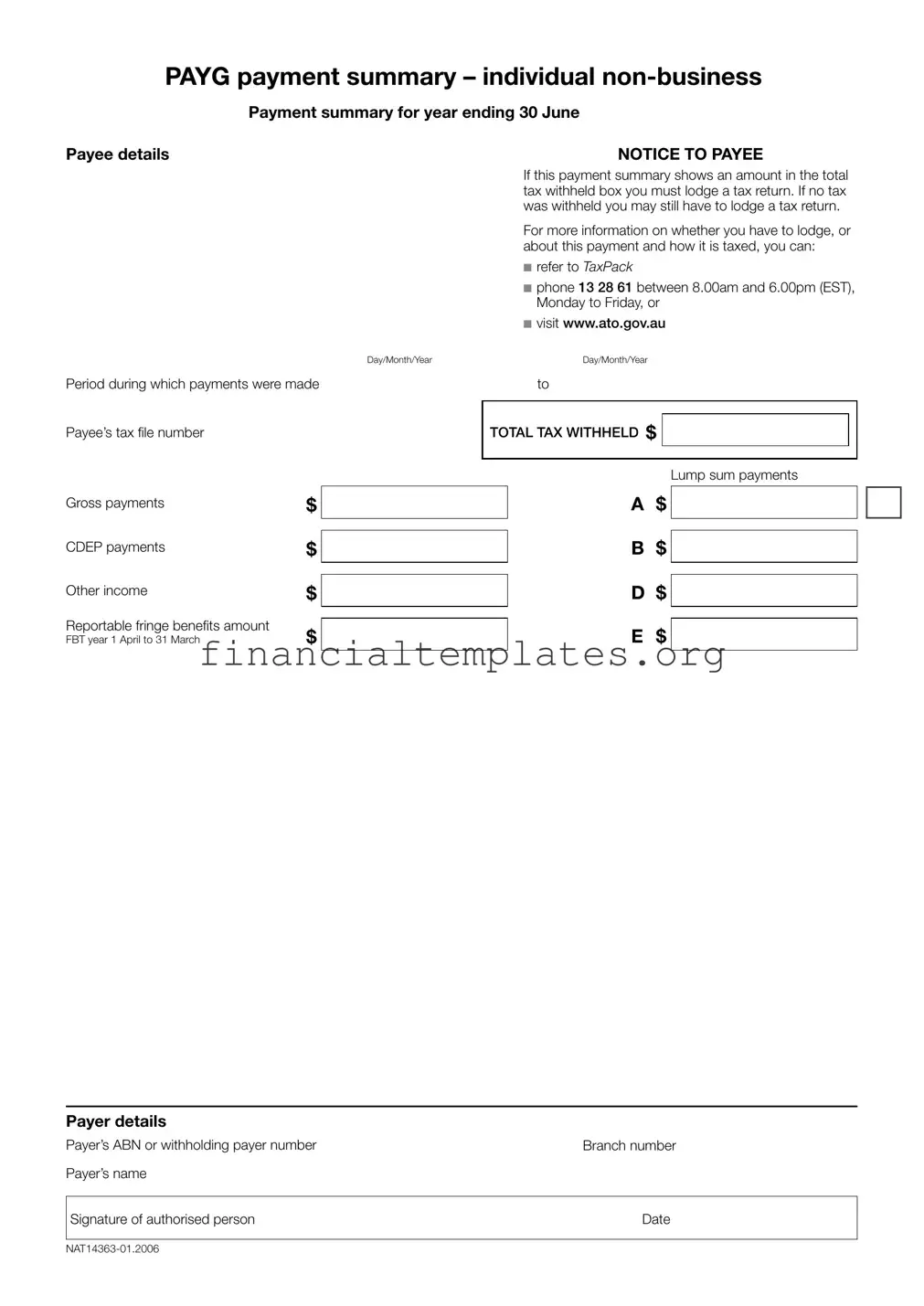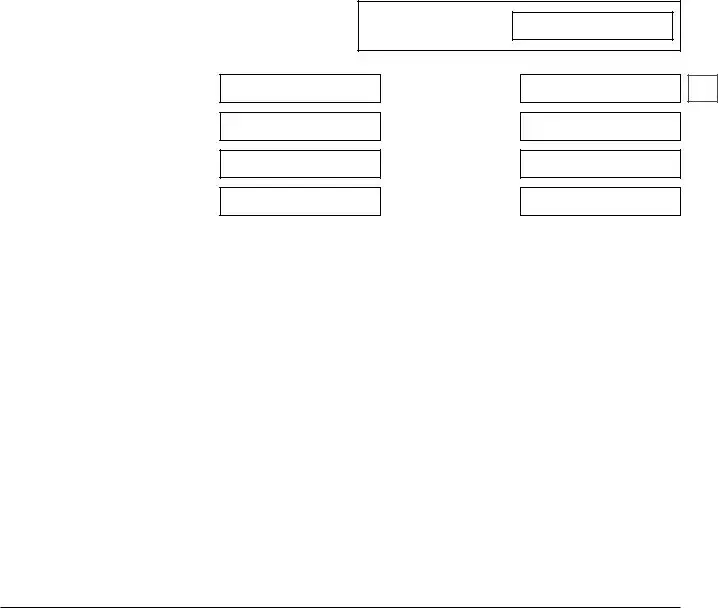The Pay As You Go (PAYG) Payment Summary – Individual Non-Business form serves as a crucial document for both taxpayers and employers in Australia, outlining earnings from employment that are not related to business activities for a specific fiscal year ending on 30 June. It delineates key information including the payee's details, such as tax file number, and breaks down earnings into categories like gross payments, Community Development Employment Projects (CDEP) payments, other income, and reportable fringe benefits with a defined Fringe Benefits Tax (FBT) year from 1 April to 31 March. The form also specifies whether tax was withheld from these payments and if so, how much, guiding individuals on their obligation to lodge a tax return. Additionally, it captures lump sum payments categorized into types A, B, D, and E, further clarifying the nature of payments received. It concludes with essential payer information, such as the Australian Business Number (ABN) or withholding payer number, and the signature of an authorized person, cementing its role as a fundamental record for income reporting and tax lodgment purposes. This comprehensive document, sourced from the Australian Taxation Office, enables individuals to accurately report their income and determine their tax responsibilities, offering an informative resource for those seeking detailed insights on non-business income within the specified financial year.

